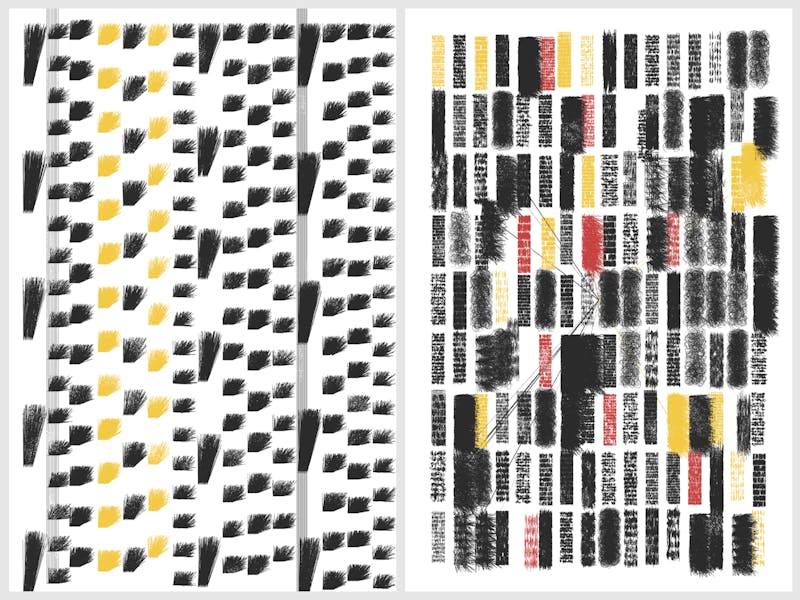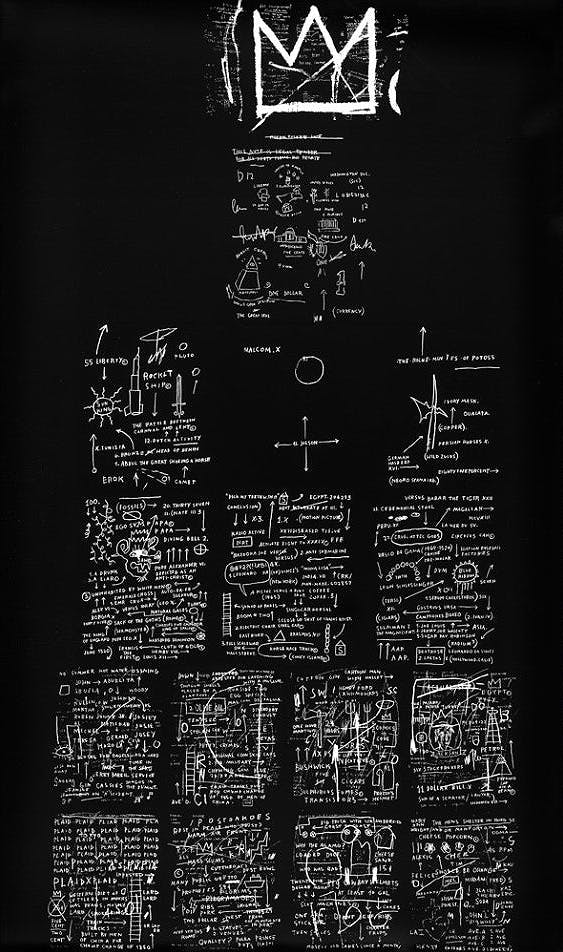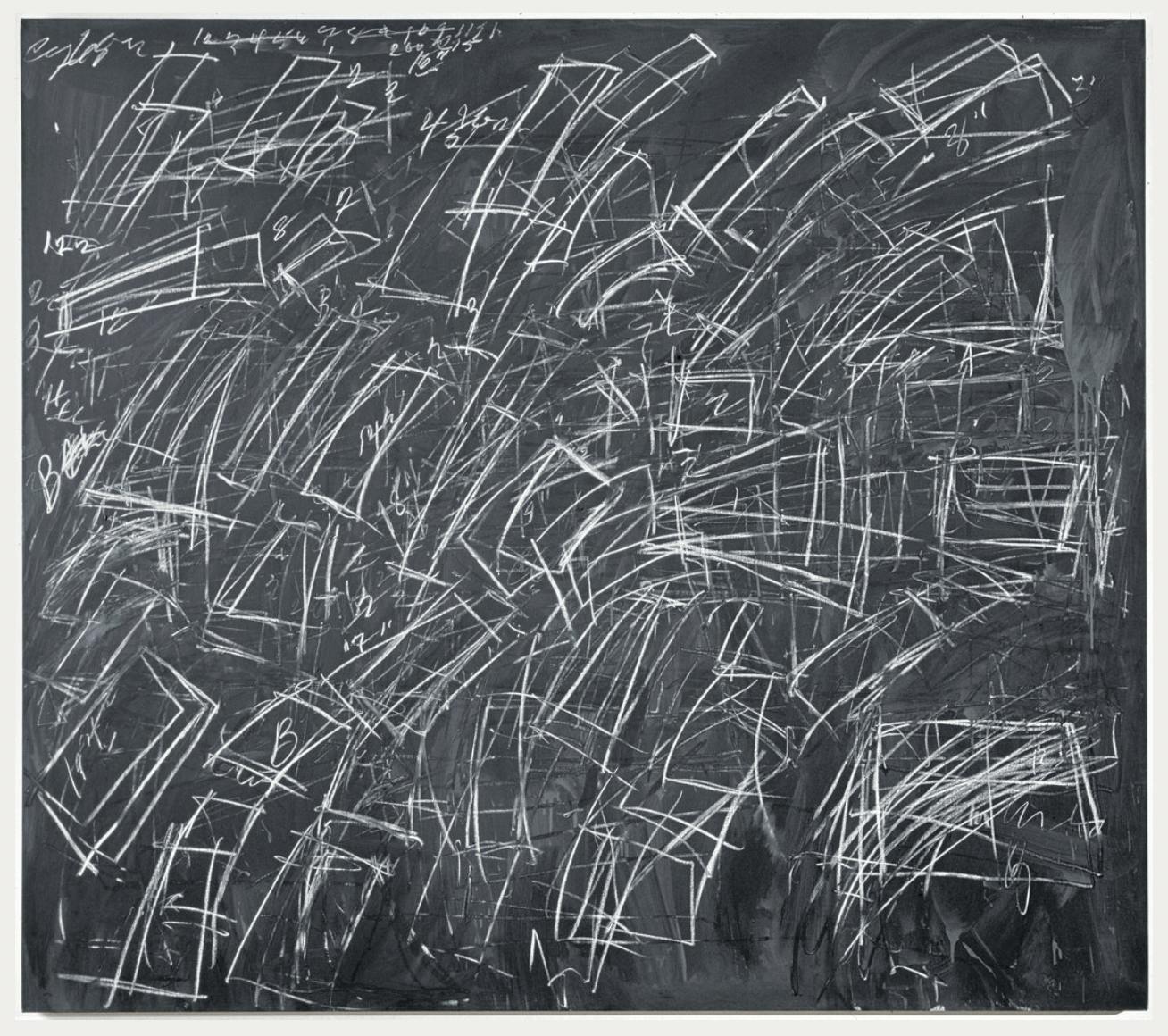At a glance, most Tych iterations present a familiar structure. They’re neatly organized in proportionally spaced columns and rows like a spreadsheet or calendar. This order represents the work's calm, familiar, and predictable component.

Tych #61 and #317
Yet, as we look deeper, we see the boxes contain incredibly intricate threads and detailed lines that are organic in their composition. These randomly generated miracles created by code represent those things that cannot be controlled.
Seeing them together, Tych achieves balance by containing uncontrolled randomness within an overarching structure, creating an analogy for something more significant: life.
Tych is Dutch artist Rudxane’s fourth project on fxhash. In his words, Tych attempts to “...bring personality to a generative system.” Going a step further, personality is the combination of characteristics or qualities forming an individual's distinctive character. We can extrapolate the artist’s intent for each Tych output to maximally express uniqueness derived from the order of code.
Rudxane’s main inspiration for Tych was finding “...the balance between computer-generated art (strict, perfectly placed) and human art (imprecise, strokes of ‘emotion’).” In creating Tych, Rudxane fused the lineage of precisely chaotic algorithmic art, ala Manfred Mohr, with the hand-painted impulsivity of Twombly, Basquiat, and Rothko.

Tuxedo, Jean-Michel Basquiat (1982-1983)

P-021-Band Structure, Manfred Mohr (1969)

Untitled, Cy Twombly (1967)
Tych compartmentalizes unpredictable personalities, emotions, and expressions within an order (seen as boxes in each generated image). These boxes – or compartments – can be memories, struggles, achievements, happiness, or anything else, all put into perspective. As natural outputs are created moment after moment, Tych binds them to life’s structure.
Another dimension opens up when we examine the work’s title and realize ‘tych’ is a suffix used to thread together multiples of related things, as in diptych and triptych. These words refer to the curatorial act of linking through a visual coherence, matching or complementing two to three works within a similar theme to display them side by side.

Tych #26, #92, and #44
Therefore, with Tych, not only do we see the work give order to the disorder of feelings and emotions, but Rudxane also challenges us to organize the pieces themselves on an even higher level – viewing the forest for the trees, if you will.
Rudxane helps us confront “chaos within order” which, for many, myself included, is an analogy for daily life. Zooming out from each box and seeing them from above helps with perspective. Further pulling back to see diptychs, triptychs, and sets shows how each piece – though strong on its own – is simply one of a greater body of work, thus inspiring us to confront, understand, and embrace the truth of our collective existence.
According to Rudxane, “a perfect life isn't actually beautiful. It's the misalignment, the mistakes, and the little errors that give it personality and make it yours and special. Tych is also a bit like this, where it tries to be more organic and invites mistakes.”
These imperfections are sometimes the experiences that we can never compartmentalize; they are the ones we look at and feel – admiring with awe and remembering in perpetuity. They are the outliers.
